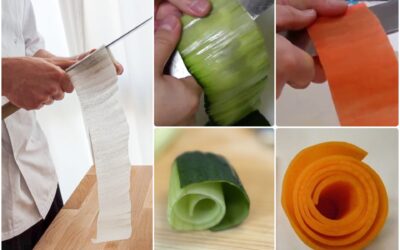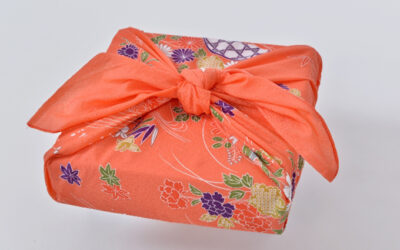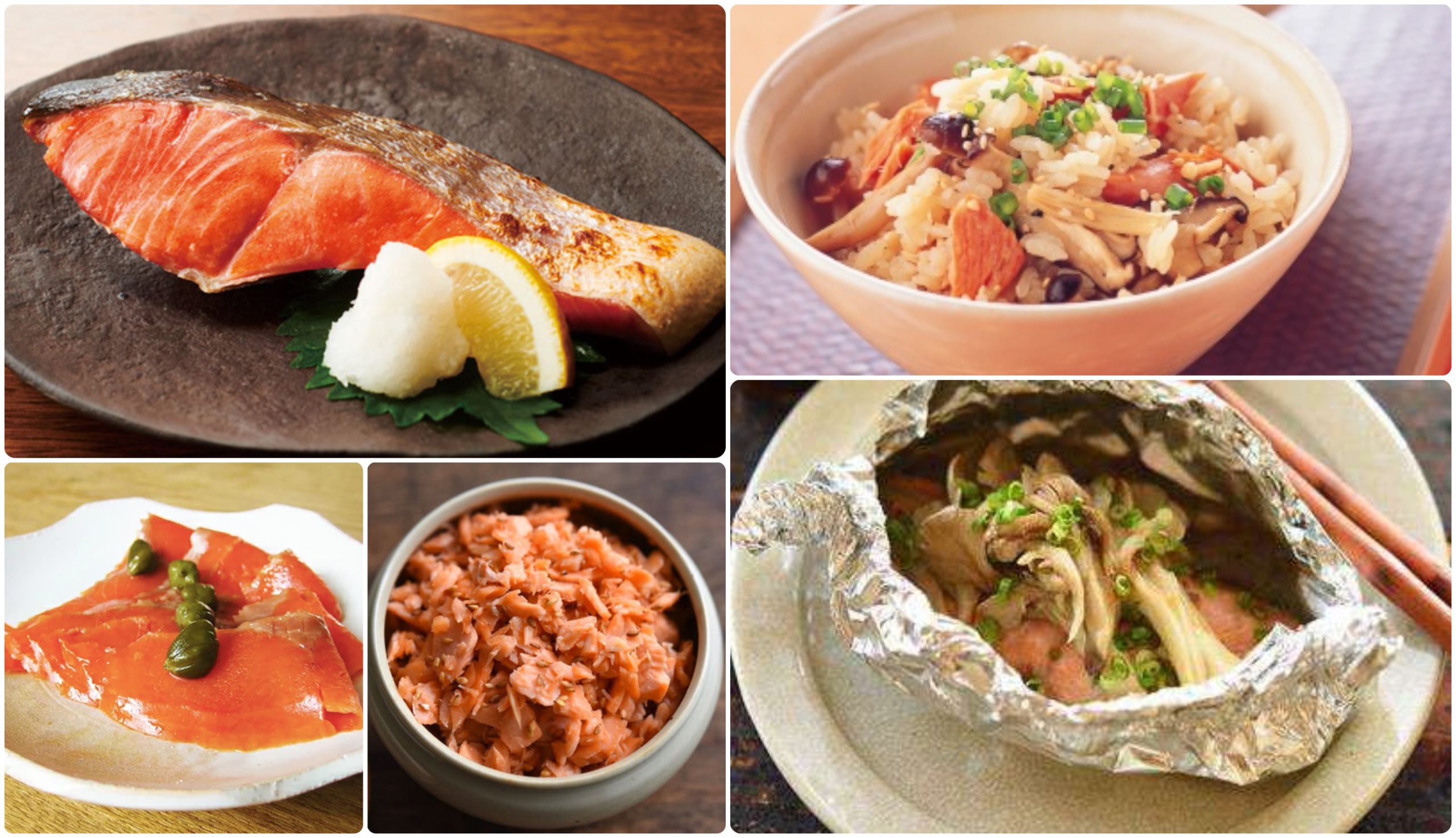
SALMON・鮭・SAKÉ
Salmon lends itself to variety of cooking methods — it can be skillet-seared, steamed, broiled, grilled, braised, smoked, poached and fried.
PROJECT Salmon is about preparing salmon in many different ways in your kitchen. You’ll find lots of suggestions and recipe resources here.
In the photo above, upperleft, clockwise: SHIO YAKI (salt-cured beni-jaké, broiled and served with grated radish and lemon); TAKIKOMI GOHAN (Rice cooked with Mushrooms and Salmon); GINGAMI MUSHI (salmon and mushrooms steamed in foil); SALMON FLAKES to toss into rice or stuff onigiri with; SMOKED SALMON (garnished here with capers).
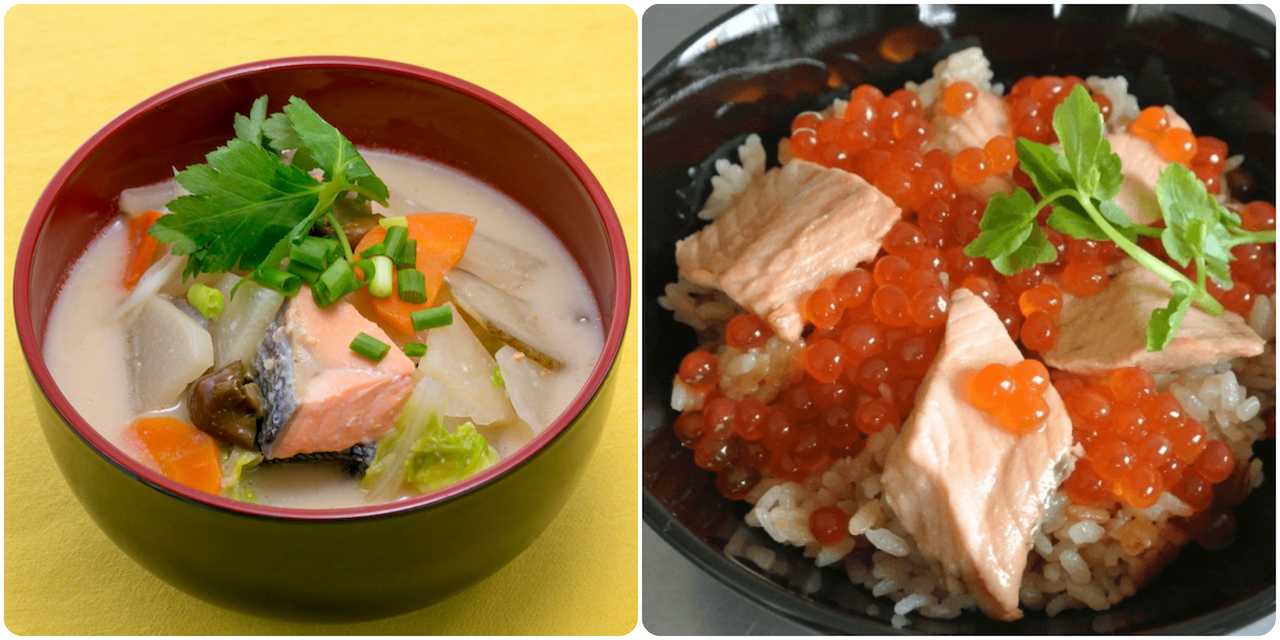
Recipe resources at this website include a belly-warming salmon and root vegetable chowder called KASU-JIRU and HARAKO MESHI rice cooked with salmon and topped with roe.
Further recipe resources for preparing salmon from previously published cookbooks (available through CKBK):
An American Taste of Japan (William Morrow, 1985) pg 142 Camellia Sushi made with smoked salmon.
An Ocean of Flavor (William Morrow, 1988) pg 114 Red and White Half-Moons made with smoked salmon and white radish.
Visit the KITCHEN CULTURE post on SALMON to learn about wild-caught varieties commonly found in the Pacific rim.
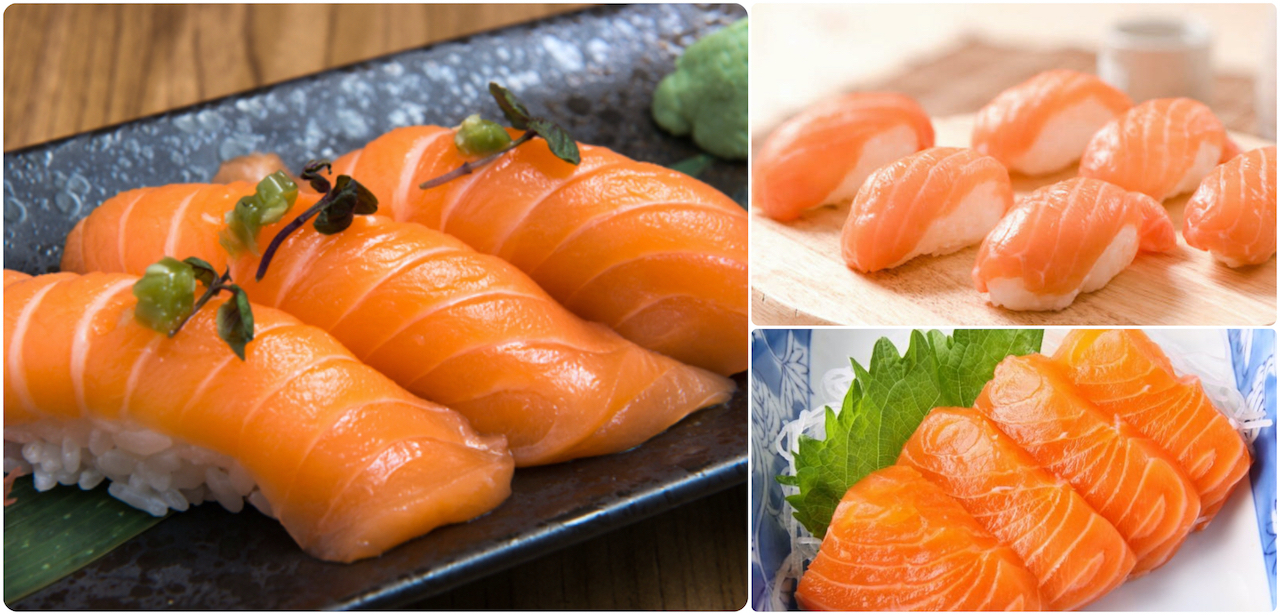
October 2022 newsletter about sāmon
The newsletter’s main story is about sāmon, salmon served as sushi and sashimi. Download a copy of the October newsletter here.



